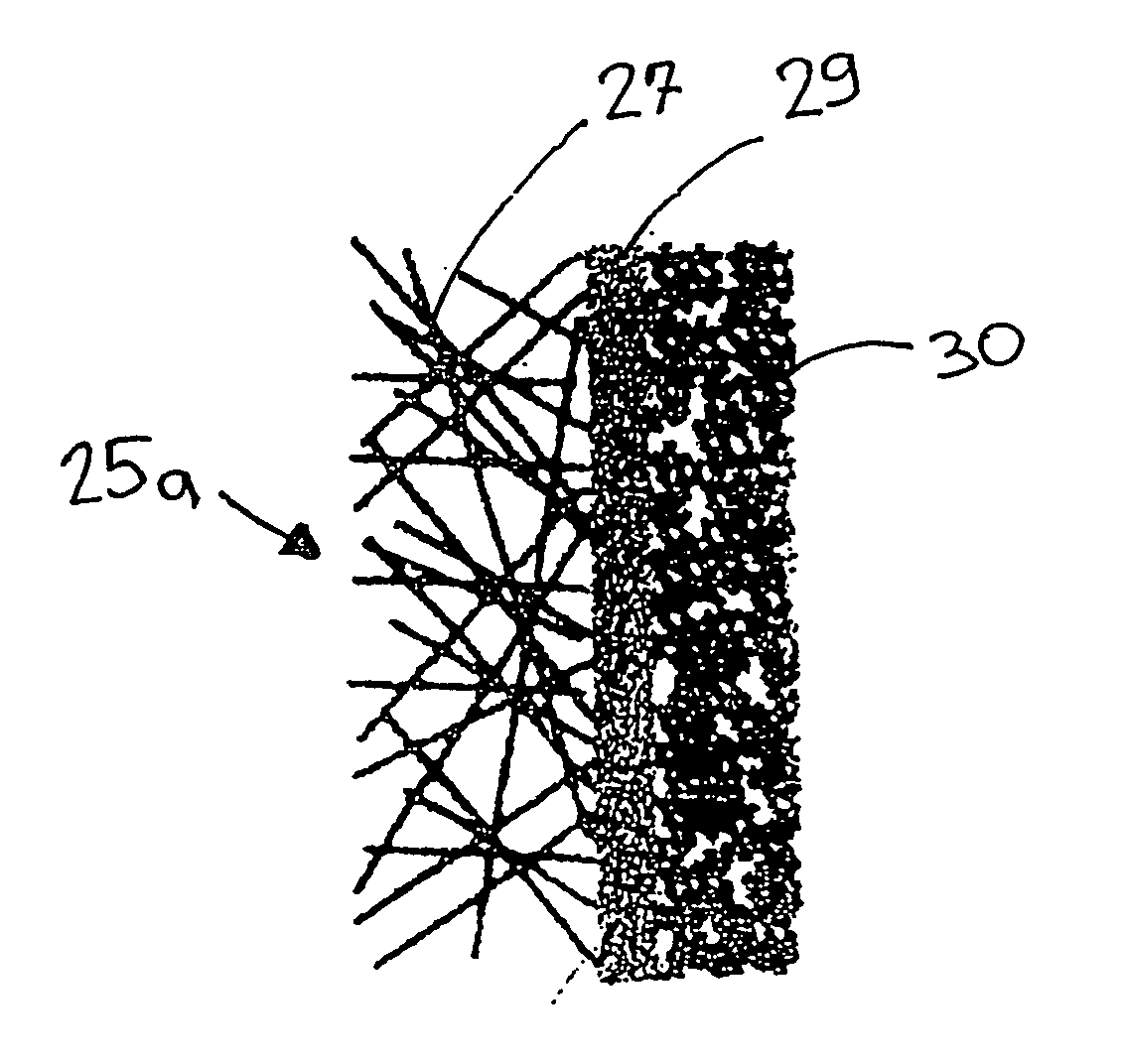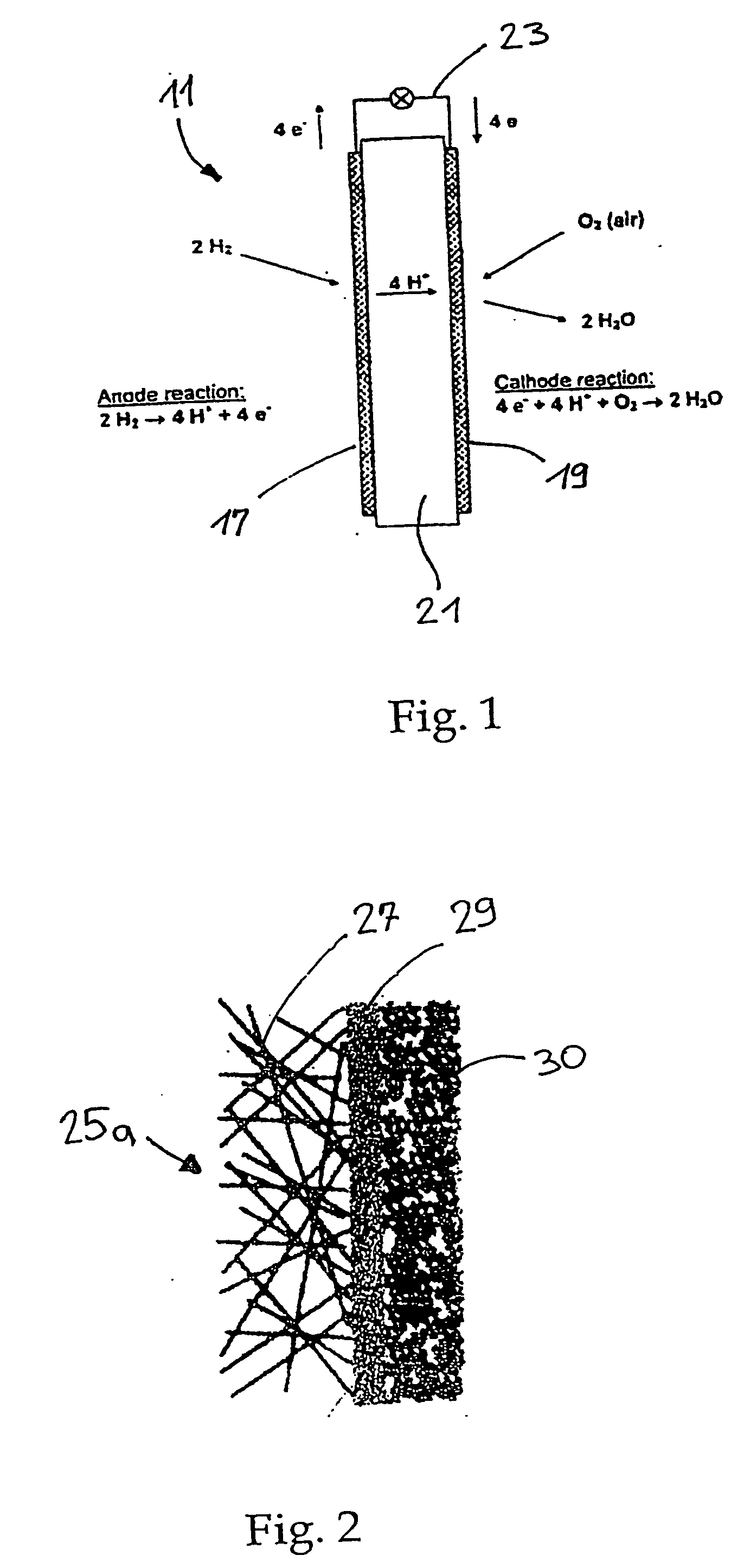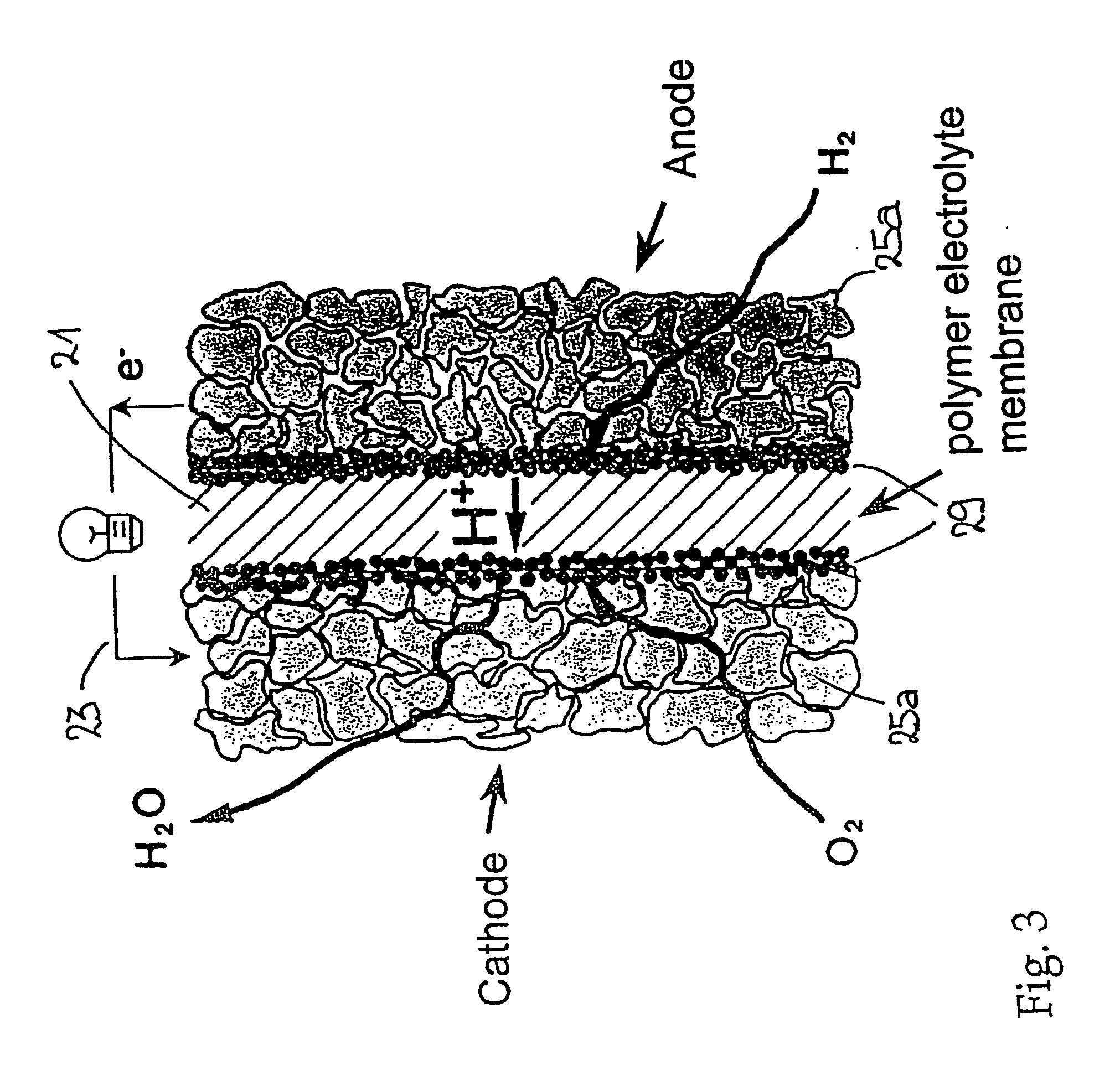Process to manufacture an ion-permeable and electrically conducting flat material, the material obtained according to the process, and fuel cells
a technology of ion-permeable and electrically conducting flat materials, which is applied in the direction of fuel cells, physical paper treatment, synthetic cellulose/non-cellulose material pulp/paper, etc., can solve the problem of high cost of manufacturing permeable membranes (=carbon cloths)
- Summary
- Abstract
- Description
- Claims
- Application Information
AI Technical Summary
Benefits of technology
Problems solved by technology
Method used
Image
Examples
Embodiment Construction
[0010] As specified by the invention, in a process according to the preamble of claim 1, staple fibers of a specific length are first fibrillated, then formed into a continuous web by means of a paper machine, preferably in an inclined wet-laid wire machine, and the web or sections thereof are subjected to a calendaring process und subsequently to a temperature treatment to obtain its electrical conductivity by carbonizing / graphitizing. The process according to the invention permits a gas-permeable material to be manufactured cost-effectively that can be employed as a gas diffusion layer in polymer electrolyte fuel cells. Surprisingly, it has been successfully shown that it is possible to manufacture a micro porous material made of synthetic fibers using the wet-laid paper-making manufacturing process of forming a fibrous web or felt, and to make this fibrous material electrically conducting, i.e. ion-permeable, by subsequently converting the synthetics to carbon / graphite. This is i...
PUM
| Property | Measurement | Unit |
|---|---|---|
| temperature | aaaaa | aaaaa |
| temperature | aaaaa | aaaaa |
| temperature | aaaaa | aaaaa |
Abstract
Description
Claims
Application Information
 Login to View More
Login to View More - R&D
- Intellectual Property
- Life Sciences
- Materials
- Tech Scout
- Unparalleled Data Quality
- Higher Quality Content
- 60% Fewer Hallucinations
Browse by: Latest US Patents, China's latest patents, Technical Efficacy Thesaurus, Application Domain, Technology Topic, Popular Technical Reports.
© 2025 PatSnap. All rights reserved.Legal|Privacy policy|Modern Slavery Act Transparency Statement|Sitemap|About US| Contact US: help@patsnap.com



